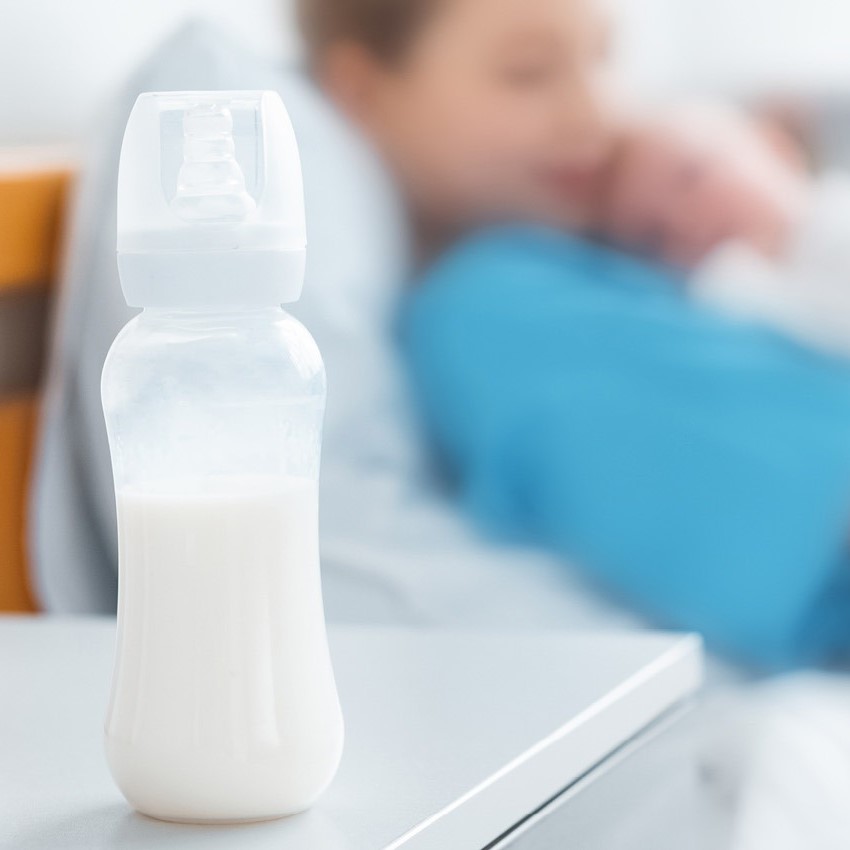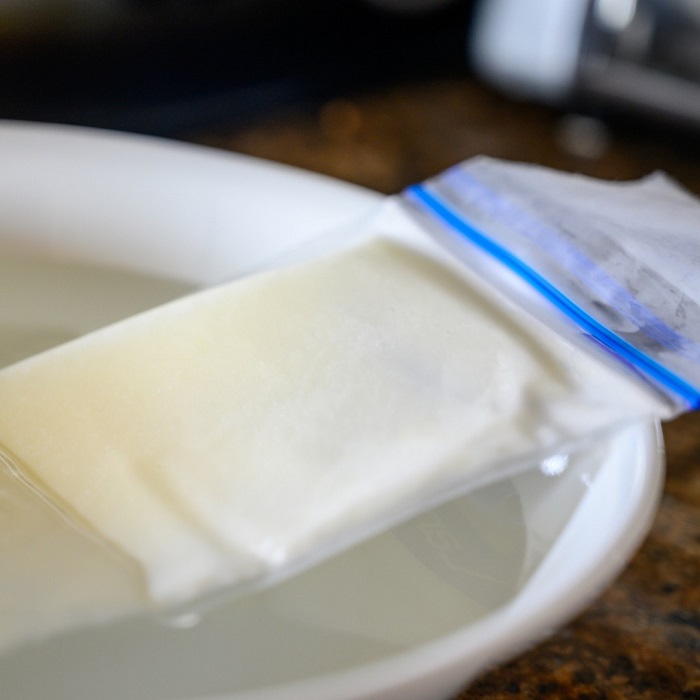The Importance of Safe Reheating of Breast Milk
Ensuring breast milk is reheated safely is crucial. It protects your baby’s health and preserves nutrients. Unsafe reheating can lead to the destruction of beneficial compounds. It can also allow harmful bacteria to grow. This puts your baby at risk of foodborne illness. Furthermore, incorrect reheating may result in uneven temperatures. This can cause hot spots that might burn your baby’s mouth. Can you reheat breast milk safely? Yes, with the right approach, you can. Always follow safe reheating techniques to ensure your baby’s safety and well-being.
Guidelines for Storing Breast Milk
Proper storage of breast milk is essential before you even think about reheating it. Breast milk should be stored in clean, BPA-free containers or breast milk storage bags. Make sure the container is sealed tightly. This helps prevent contamination. Store the milk in the back of the refrigerator or freezer where the temperature is most constant. Avoid storing breast milk in the door, as the temperature there is less stable due to frequent opening and closing.
For short-term storage, keep the breast milk in the fridge for up to four days. Make sure the refrigerator’s temperature is below 40°F (4°C). For longer storage, breast milk can be frozen. It’s best to use it within six months, but it’s safe for up to 12 months if stored in a deep freezer at a consistent 0°F (-18°C). Label each container with the date of expression. This will help you use the oldest milk first and keep track of the milk’s freshness.
When you’re out and about, you can carry the milk in a cooler bag with ice packs. The milk will stay fresh for about 24 hours in the cooler bag. Remember this when planning trips or daycare drop-offs. Always thaw frozen breast milk in the fridge and not at room temperature. This minimizes the risk of bacterial growth. Once breast milk is thawed, do not refreeze it. You should use it within 24 hours.
Now that you understand how to store breast milk, you will be better prepared to reheat it safely when needed.
Methods for Reheating Breast Milk

When the time comes to reheat stored breast milk, doing so safely is paramount. Let’s explore a couple of methods that will gently bring the milk to an appropriate temperature.
Using a Bottle Warmer
A bottle warmer is a convenient gadget for reheating breast milk. To use one, follow these steps:
- Place the breast milk container in the warmer.
- Fill the warmer with water as directed by the manufacturer.
- Set the temperature to a warm setting, not hot.
- Check the milk regularly to avoid overheating.
- Once warm, gently swirl the bottle to even out the temperature.
Bottle warmers maintain a consistent temperature, making them a safe choice. Remember, never use a microwave to reheat breast milk as it can create dangerous hot spots.
Warming Breast Milk with Warm Water
If you don’t have a bottle warmer, warm water is an excellent alternative. Here’s how you can reheat breast milk using warm water:
- Heat water in a pot or jug until warm, but not boiling.
- Remove the water from heat.
- Place the sealed container of breast milk in the warm water.
- Let it sit for a few minutes, checking frequently.
- Once warm, take out the breast milk container and swirl it.
This method is gentle and helps ensure even warming without overheating. Remember to always test the milk’s temperature before feeding it to your baby. Can you reheat breast milk more than once? The answer is no. It’s important to use reheated breast milk within two hours and discard any leftovers.
Do’s and Don’ts of Reheating Breast Milk
When it comes to reheating breast milk, it’s key to follow certain do’s and don’ts to guarantee the safety and nutritional value of your baby’s meal. Here are essential points to remember:
Do:
- Use a designated bottle warmer or warm water bath to gently heat the milk.
- Always test the temperature before feeding. It should be body temperature.
- Swirl the bottle to mix and eliminate hot spots.
- Thaw frozen milk in the refrigerator to reduce bacterial growth.
Don’t:
- Microwave breast milk, as it can create dangerous hot spots.
- Heat breast milk directly on the stove or in boiling water.
- Reheat breast milk more than once as it can compromise the quality.
- Leave reheated milk at room temperature for more than two hours.
By following these guidelines, you can ensure that you’re reheating breast milk in a way that maintains its healthful benefits and protects your baby. Remember, the goal is to mimic the natural temperature and composition of breast milk as closely as possible, so always approach reheating with care and attention.
Identifying Spoiled Breast Milk

It’s vital to know how to spot spoiled breast milk. You can save your baby from potential discomfort or illness. Spoiled milk has certain signs you should look for.
- Smell Test: Fresh breast milk has a mild scent. Spoiled milk may smell sour or rancid. Trust your nose. If it smells off, it’s better to discard it.
- Taste Test: If you’re unsure based on smell, try a tiny amount. Bad milk tastes sour. However, always test smell first.
- Visual Clues: Look for changes in color or texture. Spoiled milk may separate or have chunks. This means it’s unfit for your baby.
- Check the Stored Duration: If it’s been in the fridge over four days or thawed for more than 24 hours, it may be bad. Follow storage guidelines strictly.
- Temperature Abuse: If the milk has been left out too long, it’s not safe. Room temperature milk goes bad quickly.
- Container Integrity: Inspect the container. If it’s damaged or not sealed properly, contamination is likely. Discard the milk to be safe.
Remember to always check the milk before reheating. If you suspect the milk is spoiled, don’t take chances. Even if it means wasting a batch, your baby’s health comes first. Keep in mind that ‘Can you reheat breast milk?’ only applies to milk that’s fresh and well-stored to start with.
Tips for Preserving Nutrients During Reheating
Maintaining the nutritional integrity of breast milk while reheating is of utmost importance. Here’s how to ensure nutrients stay when warming the milk for your little one.
- Gentle Heat: Use low heat to warm breast milk. High temperatures can break down vital nutrients.
- Avoid Boiling: Never boil breast milk. Boiling can destroy antibodies and proteins essential for your baby’s health.
- Short Timeframe: Reheat milk just until it’s warm. Long heating times can negatively affect the quality.
- Don’t Stir: Gently swirl the milk to mix layers without disrupting nutrient-packed fat particles.
- Single Use: Reheat only what your baby will consume. Reheating the same milk multiple times can cause nutrient loss.
By following these tips, you can preserve the precious nutrients in breast milk while ensuring it’s safe and comforting for your baby. Keep in mind that gentle and quick reheating is the key, and always prioritize safety and your baby’s health above all when asking, ‘can you reheat breast milk?’.
Serving Reheated Breast Milk to Your Baby

After you’ve carefully reheated the breast milk, it’s time to serve it to your baby. Here is how you can do this safely and effectively:
- Check the Temperature: Before giving the milk to your baby, ensure it’s not too hot. The milk should feel lukewarm, similar to body temperature.
- Test Taste: Put a few drops on your wrist to test. It should not feel hot. This spot is sensitive to heat, making it a good indicator.
- Use Clean Bottles: Always pour the reheated milk into a sterile bottle. This helps keep your baby from germs.
- Feed Immediately: Offer the milk to your baby right after reheating. Don’t let it sit at room temperature.
- Discard Leftovers: If your baby doesn’t finish the bottle, throw away the remaining milk. Bacteria can grow, making it unsafe for another feed.
- Comfortable Position: Hold your baby in a cozy, semi-upright position while feeding. This can help prevent choking.
- Bonding Time: Turn feeding time into bonding time. Maintain eye contact and speak softly to your baby.
By following these steps, you can be sure that you are serving the safey reheated breast milk to your baby. Additionally, with these measures, you also ensure preserving the reheated milk’s nutritional content and making the feeding experience pleasant and safe for your little one. Always remember that ‘can you reheat breast milk’ carries the responsibility of serving it correctly to uphold your baby’s health.